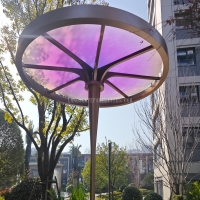Welcome to the website for landscape facilities products and knowledge.
What are the structural engineering requirements for cantilevered landscape tables?
Cantilevered landscape tables are a popular choice for modern outdoor spaces, offering both aesthetic appeal and functional benefits. However, their unique design demands careful attention to structural engineering principles to ensure safety and durability. Here are the key requirements for designing cantilevered landscape tables:
1. Load-Bearing Capacity: The table must support dynamic and static loads, including the weight of the tabletop, items placed on it, and potential environmental forces like wind or snow. Engineers calculate the maximum expected load to determine the required strength of the supporting structure.
2. Material Selection: High-quality, weather-resistant materials such as stainless steel, aluminum, or treated hardwood are essential. The materials must resist corrosion, UV damage, and thermal expansion to maintain structural integrity over time.
3. Anchor and Foundation Design: A robust anchoring system is critical to counterbalance the cantilevered load. The foundation (e.g., concrete footings or ground screws) must be deep and stable enough to prevent tipping or shifting.
4. Deflection Limits: The design should minimize deflection (bending) under load to ensure user comfort and prevent long-term fatigue. Engineers often use finite element analysis (FEA) to simulate stress points.
5. Safety Factors: A safety factor of at least 2.5 is typically applied to account for unforeseen stresses, ensuring the table remains stable under extreme conditions.
By adhering to these engineering requirements, cantilevered landscape tables can combine elegance with reliability, making them a lasting addition to any outdoor setting.
Related search:

Recommendation
Metal frame with gradient color acrylic combined with high-end shading landscape facilities